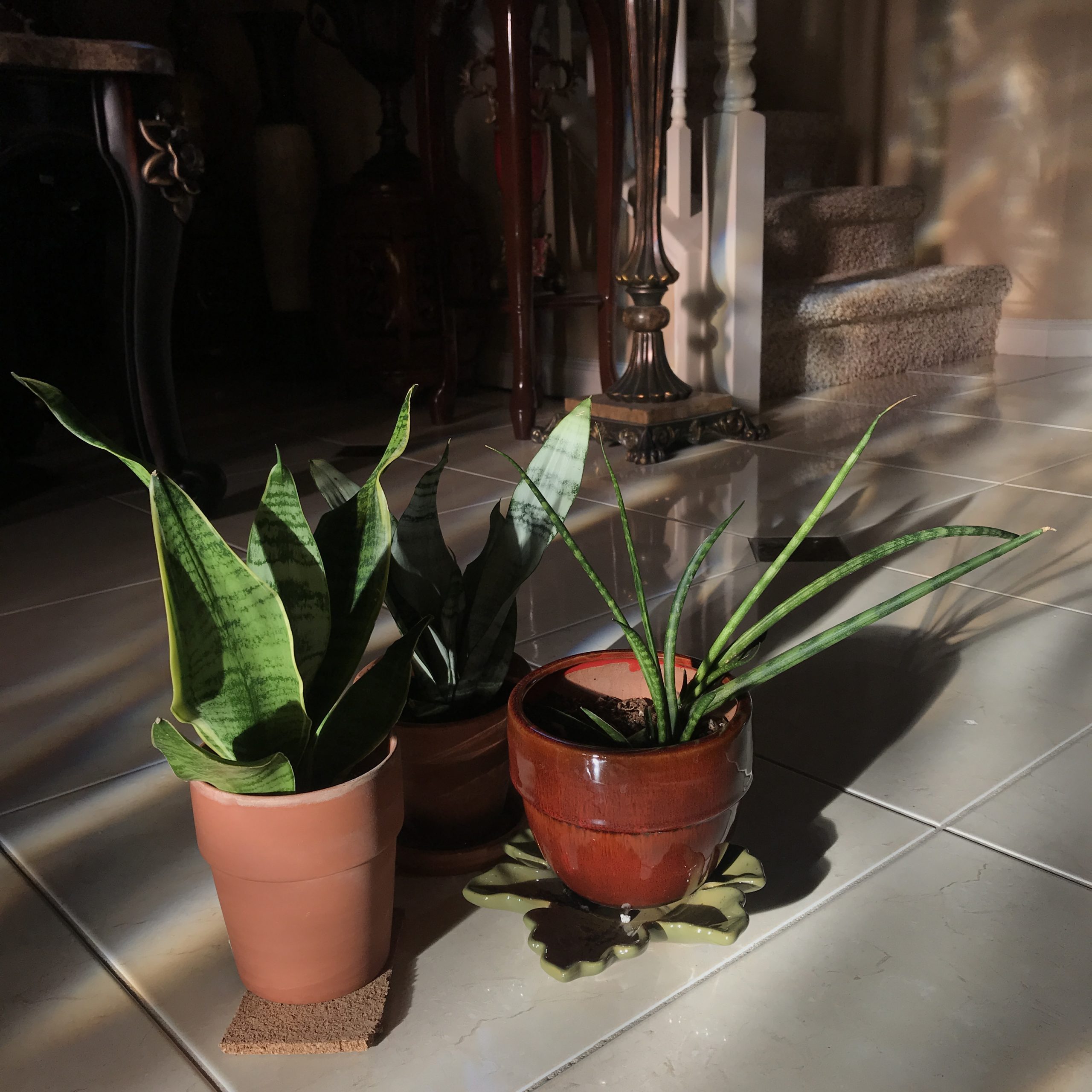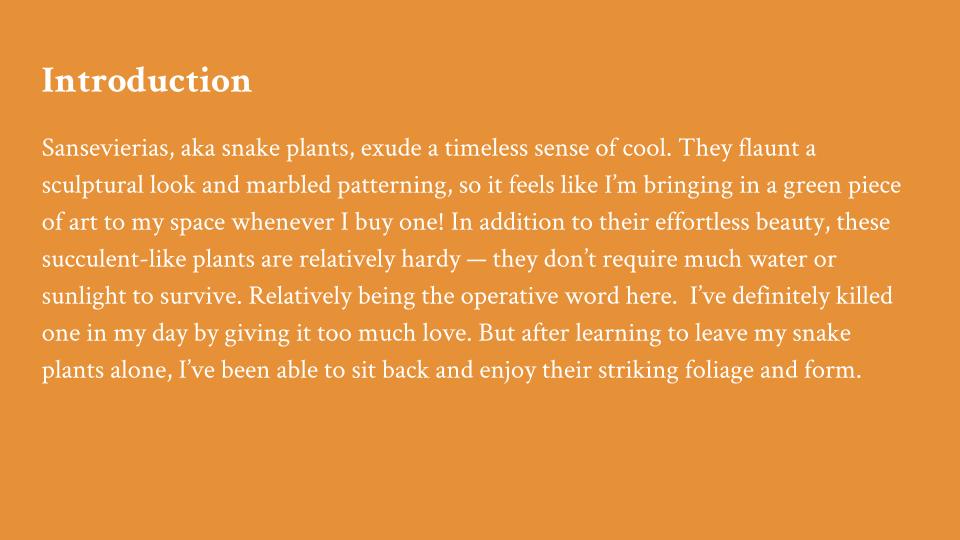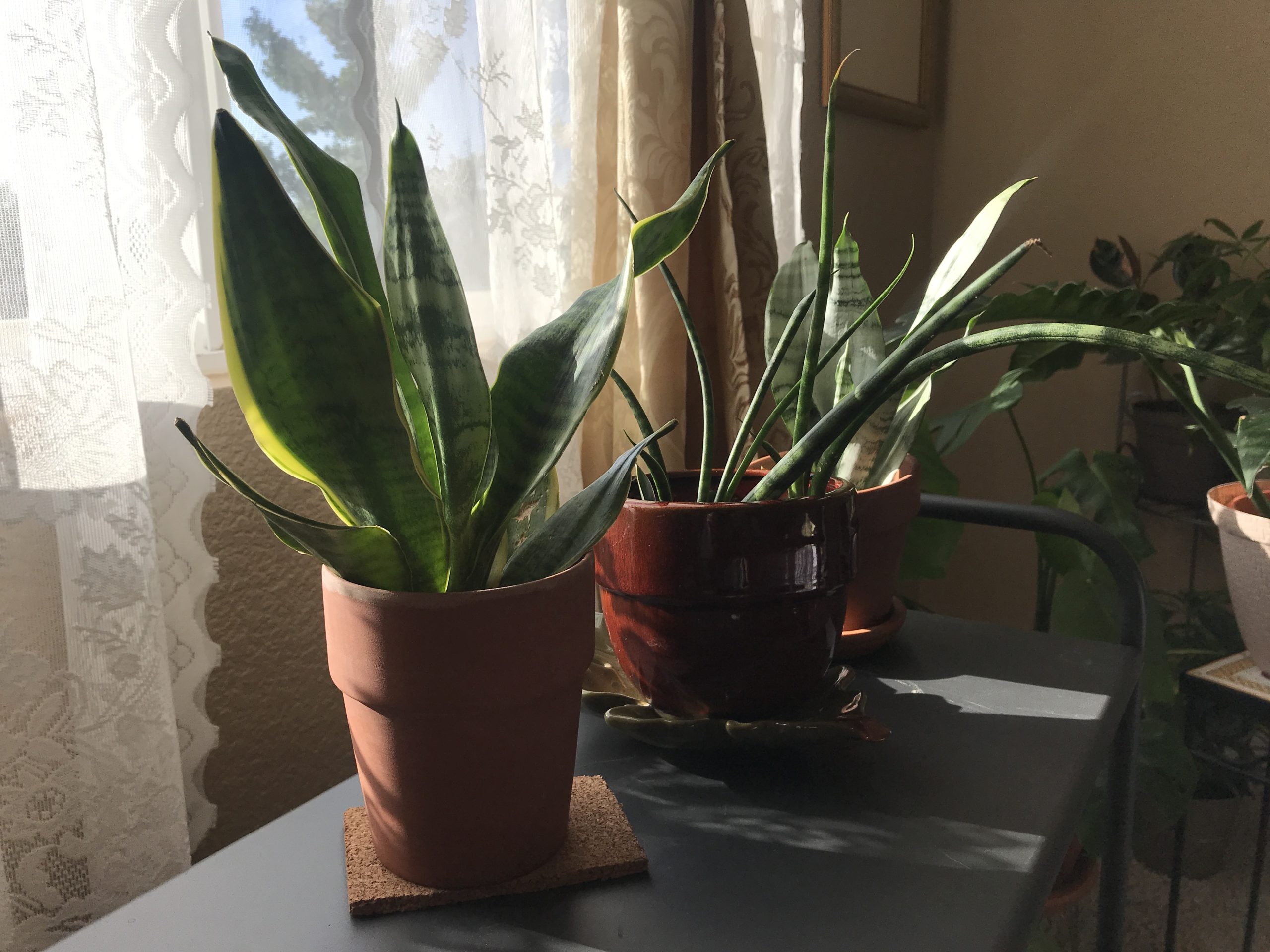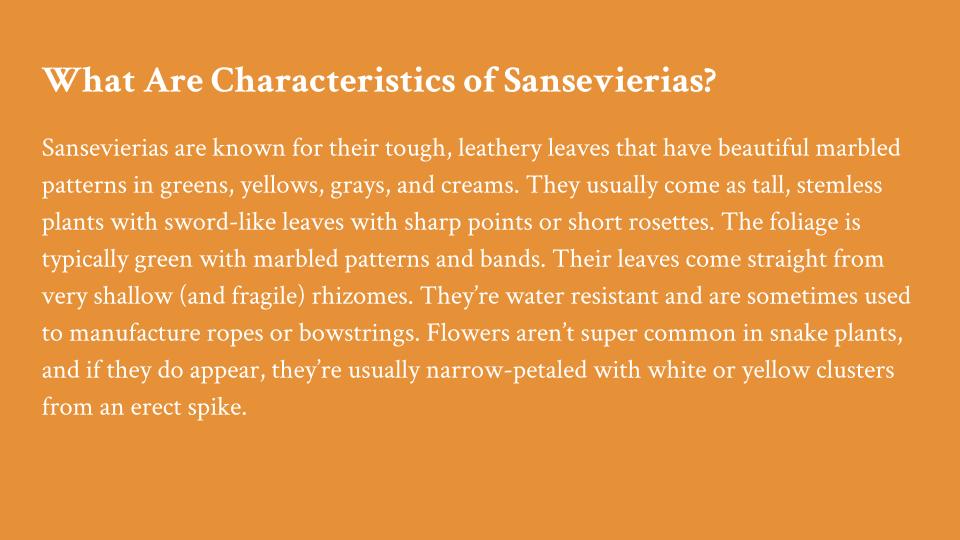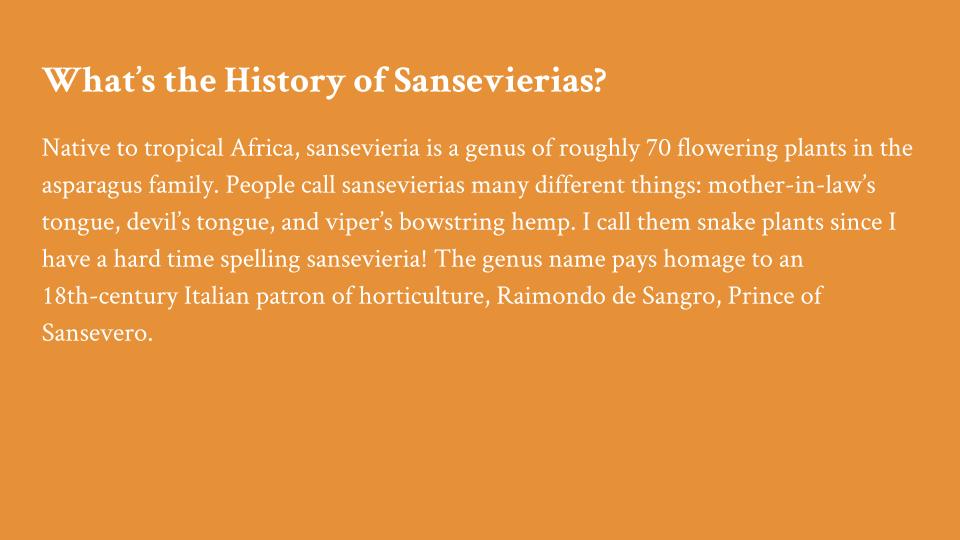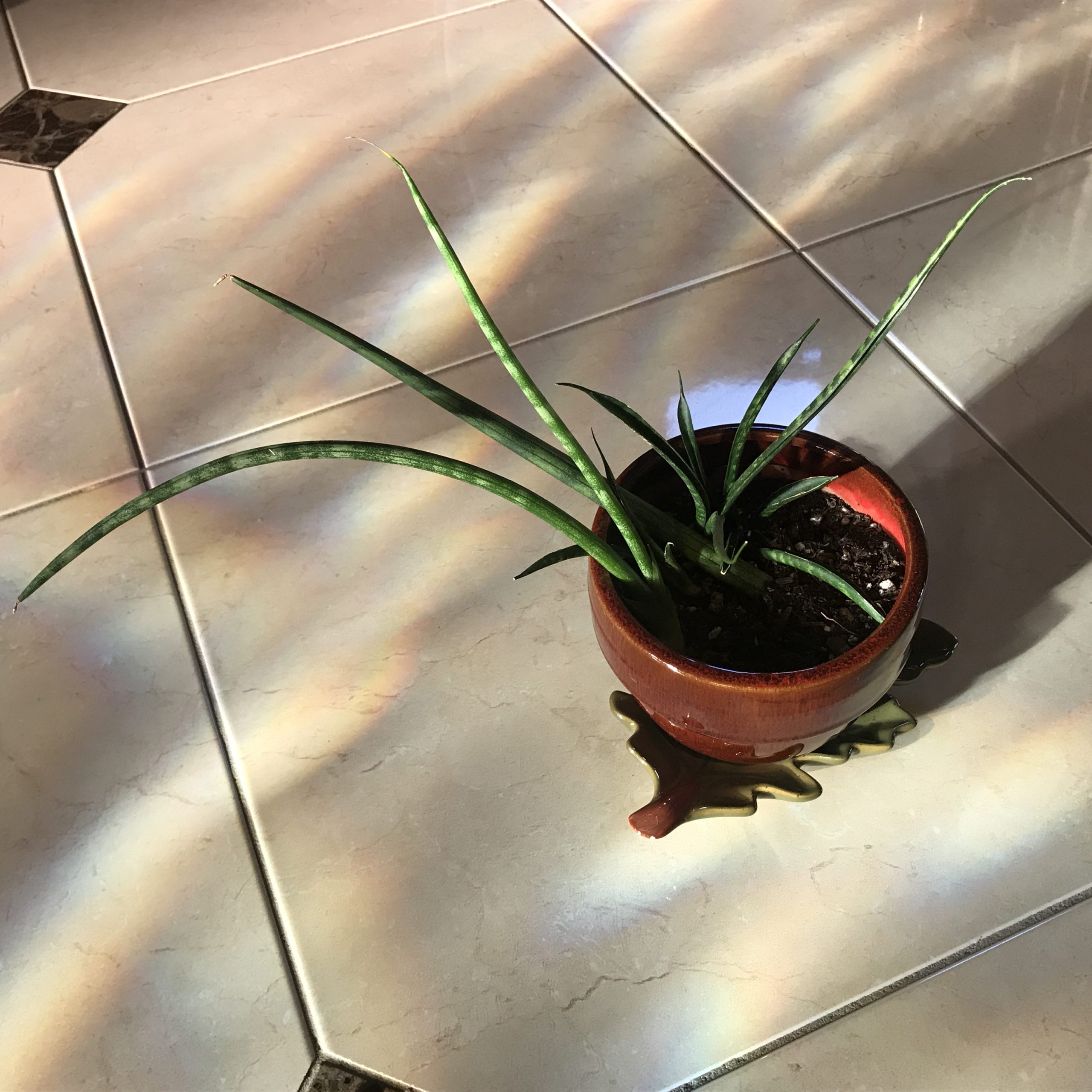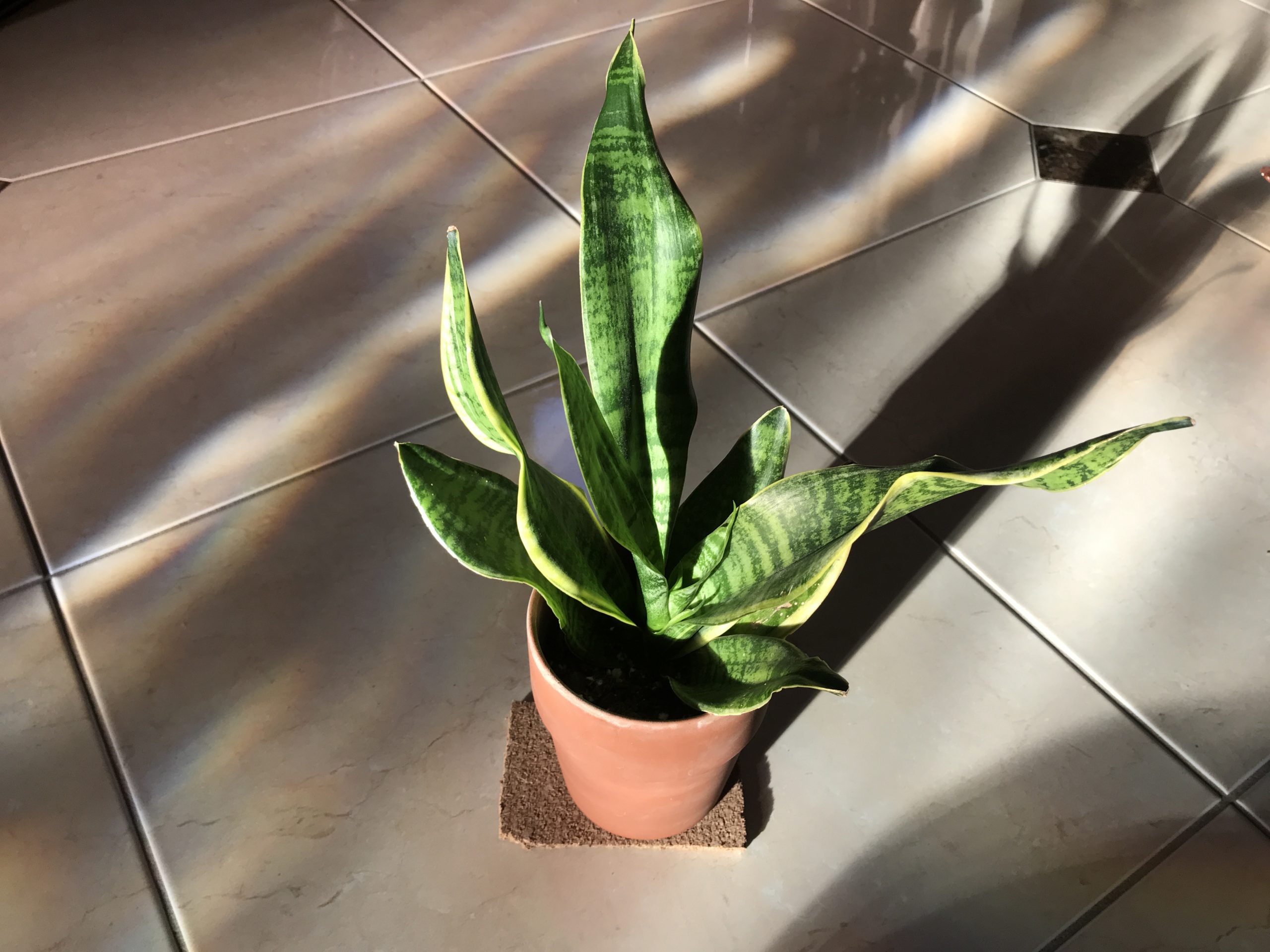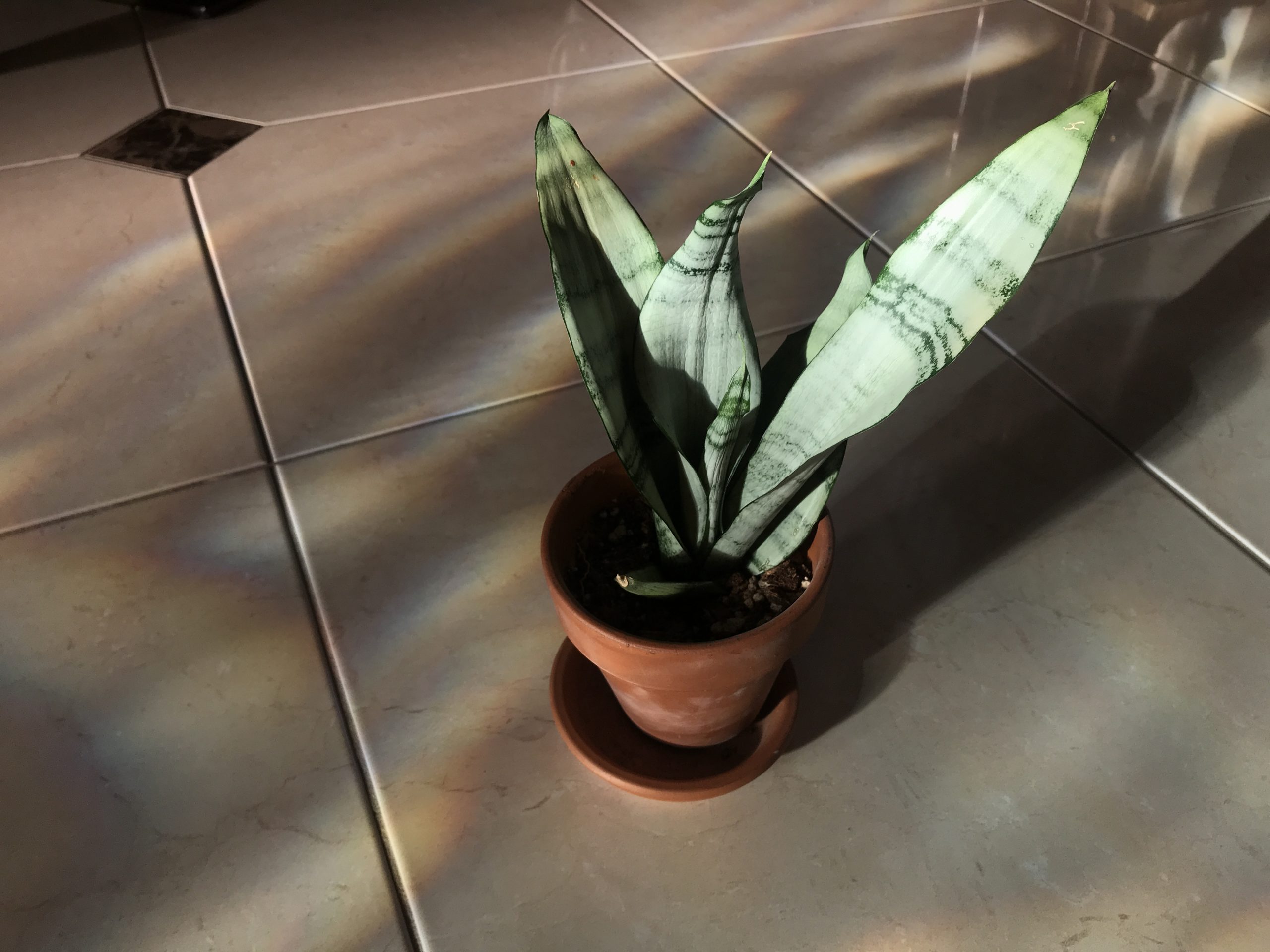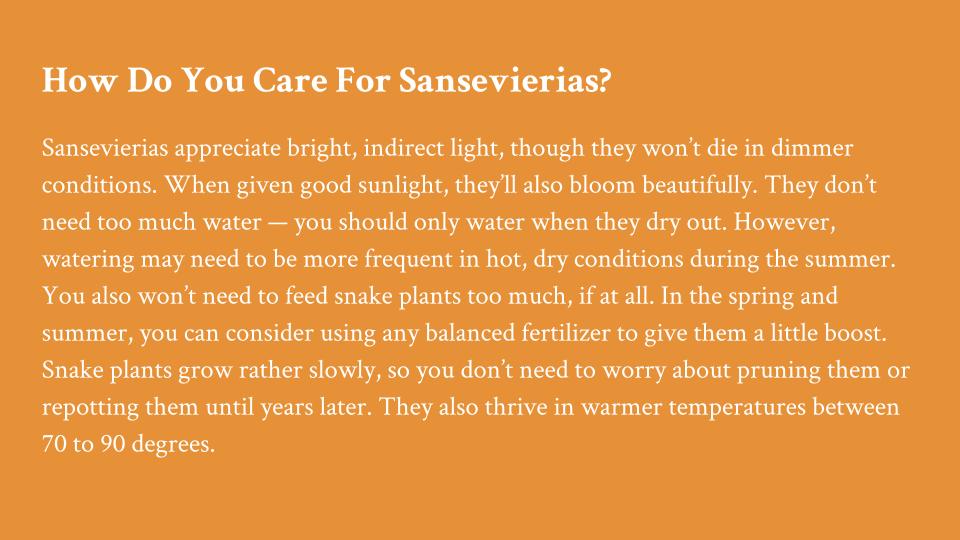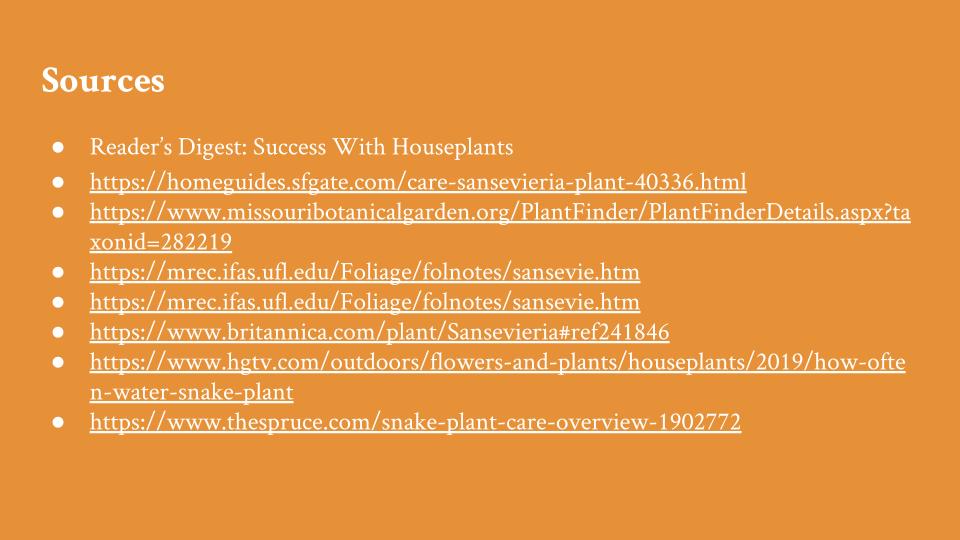Introduction
Sansevierias, aka snake plants, exude a timeless sense of cool. They flaunt a sculptural look and marbled patterning, so it feels like I’m bringing in a green piece of art to my space whenever I buy one! In addition to their effortless beauty, these succulent-like plants are relatively hardy — they don’t require much water or sunlight to survive. Relatively being the operative word here. I’ve definitely killed one in my day by giving it too much love. But after learning to leave my snake plants alone, I’ve been able to sit back and enjoy their striking foliage and form.
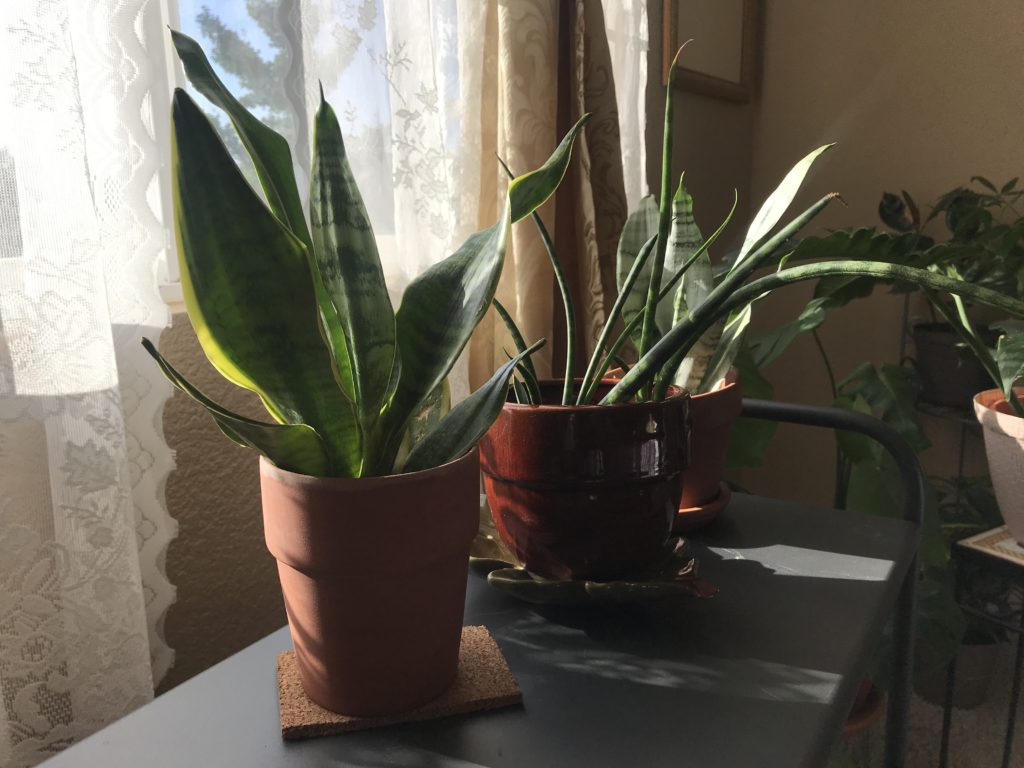
What Are the Characteristics of Sansevierias?
Sansevierias are known for their tough, leathery leaves that have beautiful marbled patterns in greens, yellows, grays, and creams. They usually come as tall, stemless plants with sword-like leaves with sharp points or short rosettes. The foliage is typically green with marbled patterns and bands. Their leaves come straight from very shallow (and fragile) rhizomes. They’re water resistant and are sometimes used to manufacture ropes or bowstrings. Flowers aren’t super common in snake plants, and if they do appear, they’re usually narrow-petaled with white or yellow clusters from an erect spike.
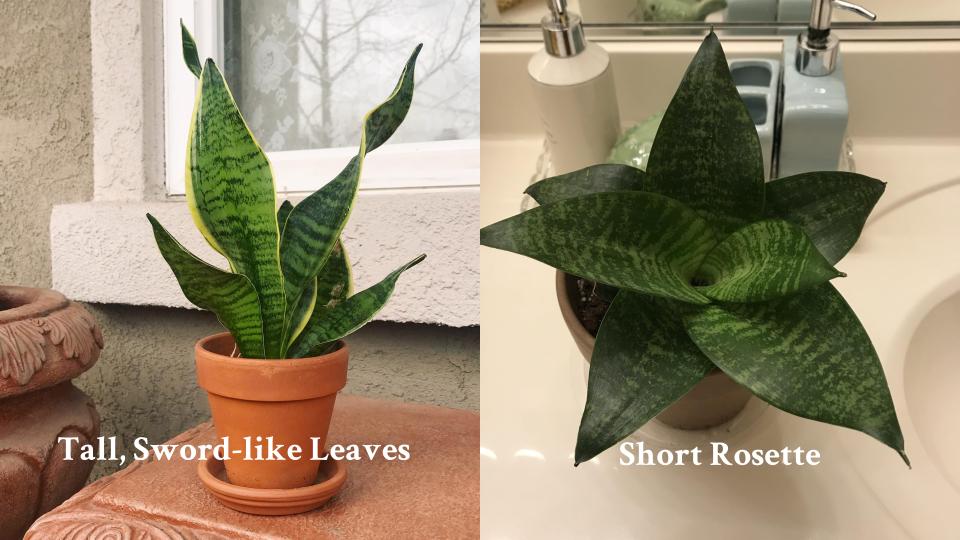
What Types of Sansevieria Plants Are There?
Here are common sansevieria plants you’ll find in stores:
- Snake plant / Viper’s Bowstring (sansevieria trifasciata): These grow between 1 to 1.5 feet tall (sometimes taller) and have marbled foliage. There are often bright bands along the leaf margins. The laurentii have golden edges.
- Bird’s Nest Snake Plant (sansevieria trifasciata hahnii): These are short rosette plants that resemble a bird’s nest fern, only with leathery leaves.
- Cylinder snake plant (sansevieria cylindrica): These have 3-4 thick, cylindrical leaves with dark green cross-banding. They grow up to 4.5 feet tall.
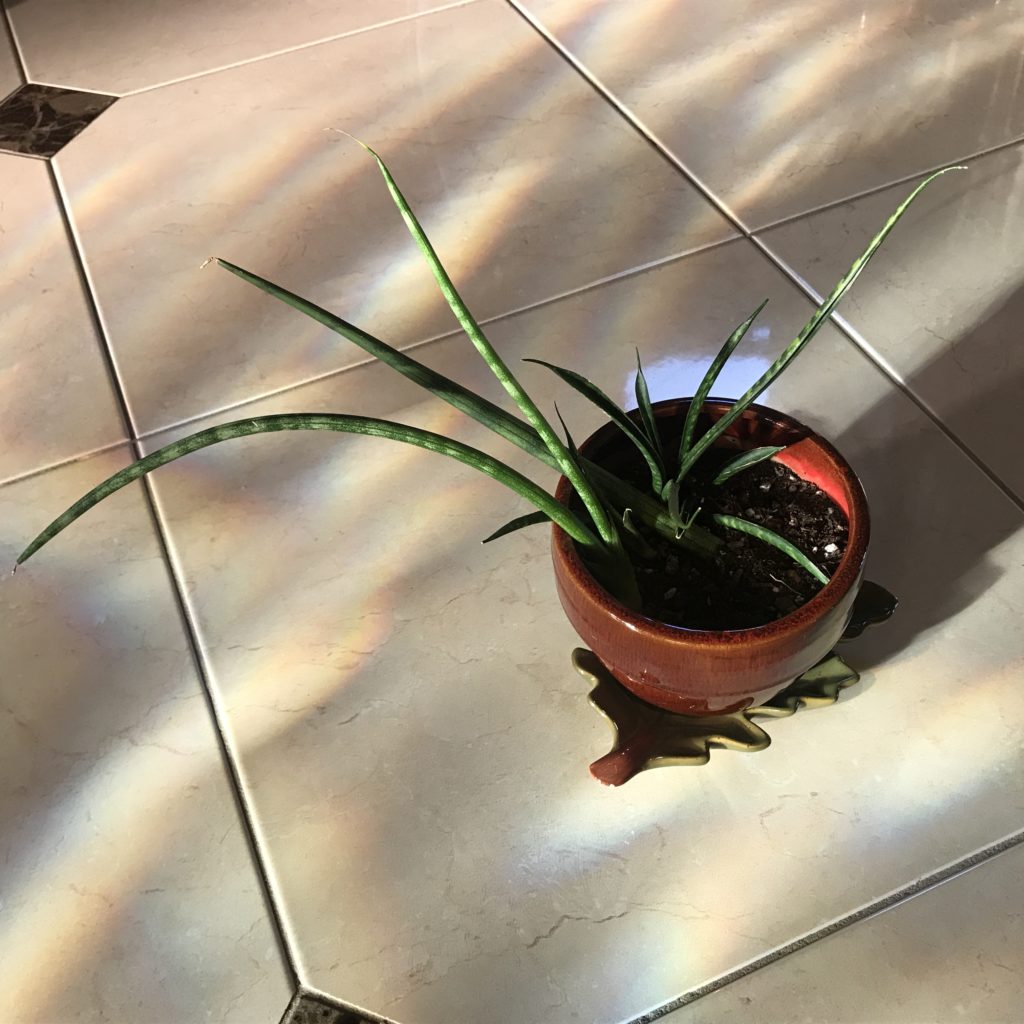
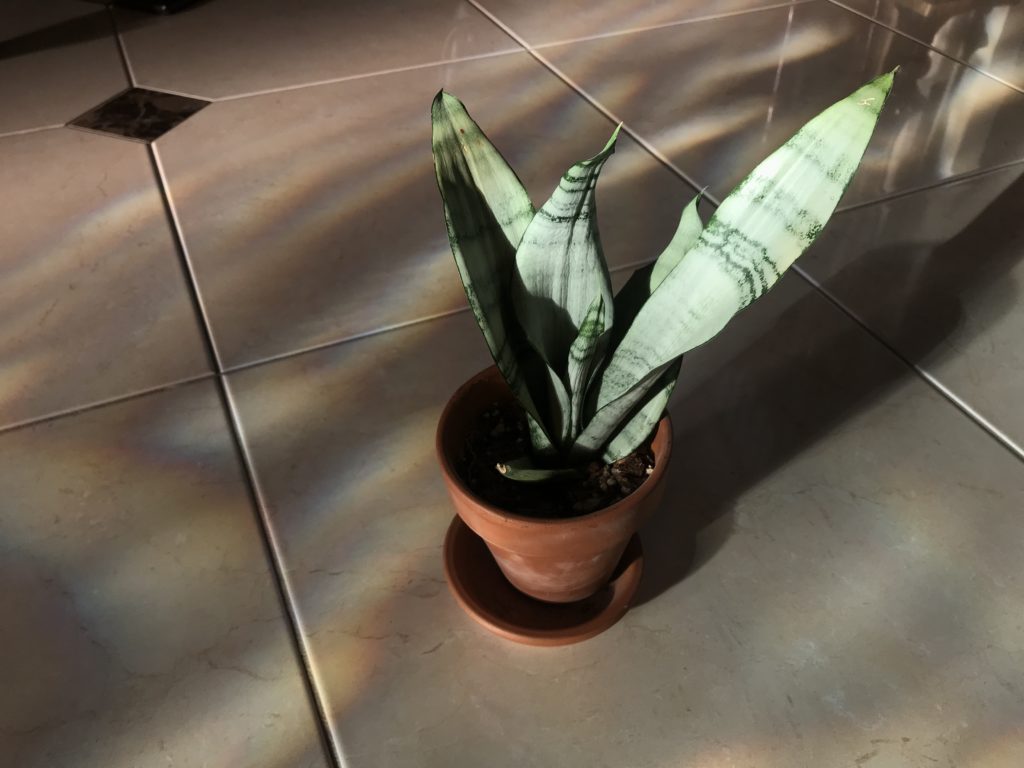
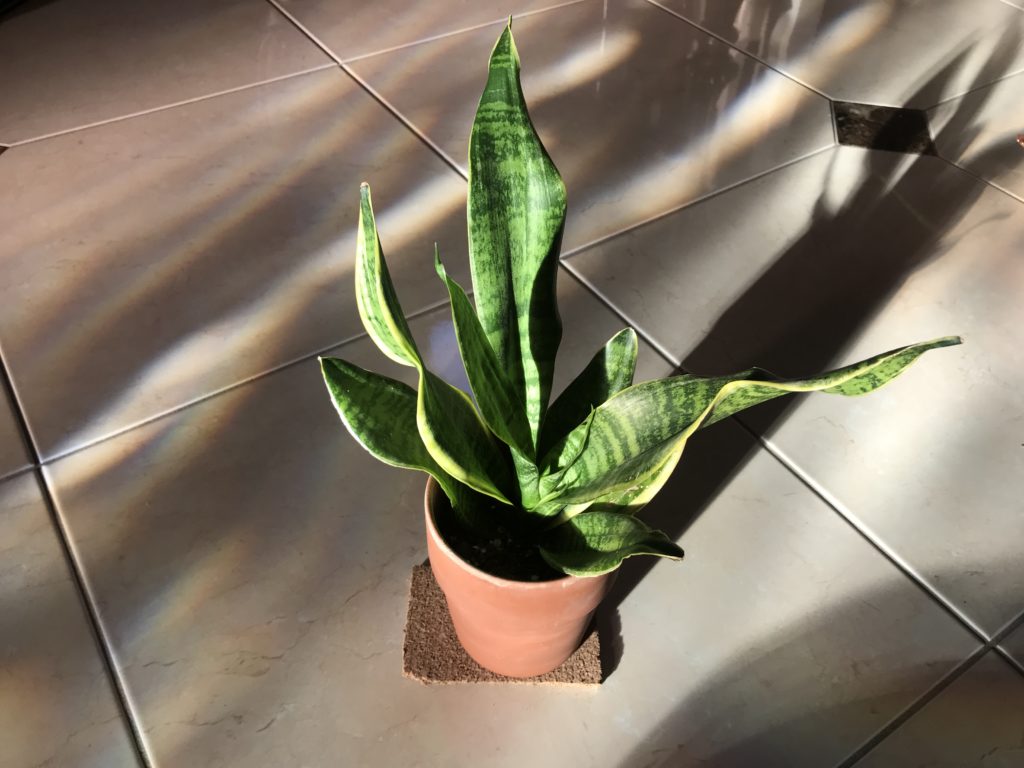
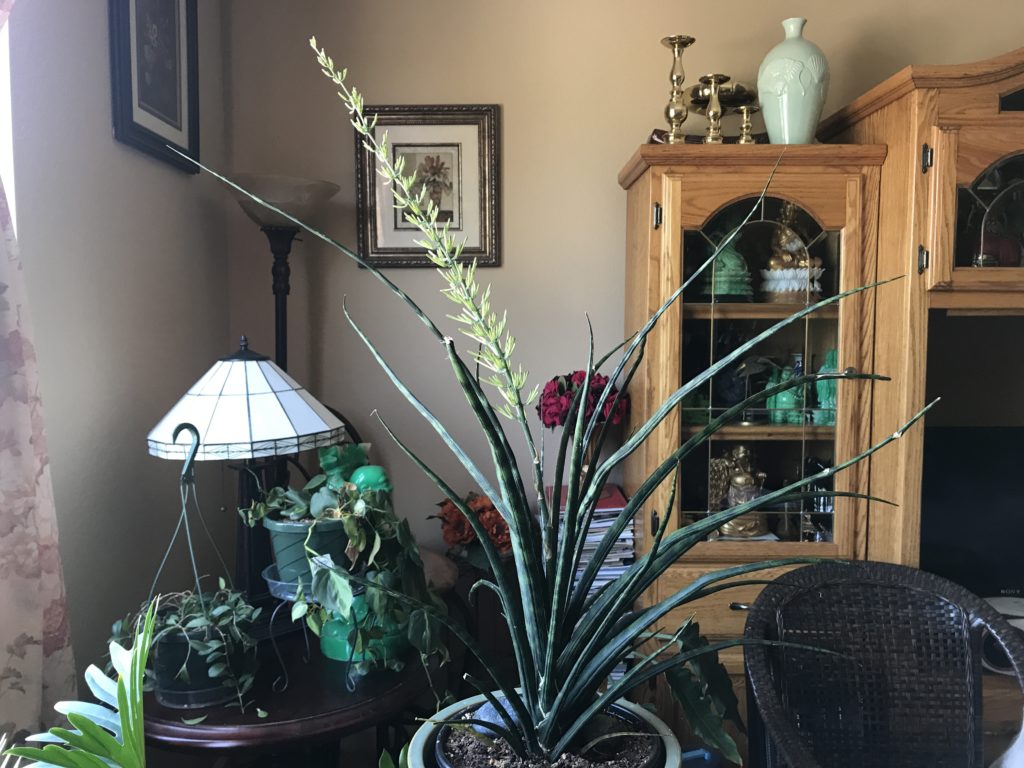
What’s the History of Sansevierias?
Native to tropical Africa, sansevieria is a genus of roughly 70 flowering plants in the asparagus family. People call sansevierias many different things: mother-in-law’s tongue, devil’s tongue, and viper’s bowstring hemp. I call them snake plants since I have a hard time spelling sansevieria! The genus name pays homage to an 18th-century Italian patron of horticulture, Raimondo de Sangro, Prince of Sansevero.
How Do You Care for Sansevierias?
Sansevierias appreciate bright, indirect light, though they won’t die in dimmer conditions. When given good sunlight, they’ll also bloom beautifully. They don’t need too much water — you should only water when they dry out. However, watering may need to be more frequent in hot, dry conditions during the summer. You also won’t need to feed snake plants too much, if at all. In the spring and summer, you can consider using any balanced fertilizer to give them a little boost. Snake plants grow rather slowly, so you don’t need to worry about pruning them or repotting them until years later. They also thrive in warmer temperatures between 70 to 90 degrees.
What Are Problems That Sansevierias Face?
Sansevierias are steely plants, but that doesn’t necessarily mean that they’re invincible. Just like any other houseplant, they crave a little TLC. One of the biggest problems that sansevierias face is root rot (guilty!), as their root systems aren’t usually very big and can get overwhelmed easily. Overwatering is usually the common culprit for yellow leaves. If this is the case, cut off the mushy roots and change the plant out from the soggy soil. If you have a plant that looks like a rosette, be sure not to water into the center. On the flip side, wrinkly leaves may indicate that you’re underwatering. You know what to do.
Sources
- Reader’s Digest: Success With Houseplants
- https://homeguides.sfgate.com/care-sansevieria-plant-40336.html
- https://www.missouribotanicalgarden.org/PlantFinder/PlantFinderDetails.aspx?taxonid=282219
- https://mrec.ifas.ufl.edu/Foliage/folnotes/sansevie.htm
- https://mrec.ifas.ufl.edu/Foliage/folnotes/sansevie.htm
- https://www.britannica.com/plant/Sansevieria#ref241846
- https://www.hgtv.com/outdoors/flowers-and-plants/houseplants/2019/how-often-water-snake-plant
- https://www.thespruce.com/snake-plant-care-overview-1902772
Slides
Scroll through for all of the same information in slide form!
